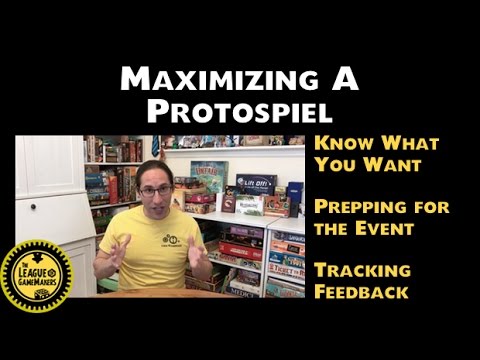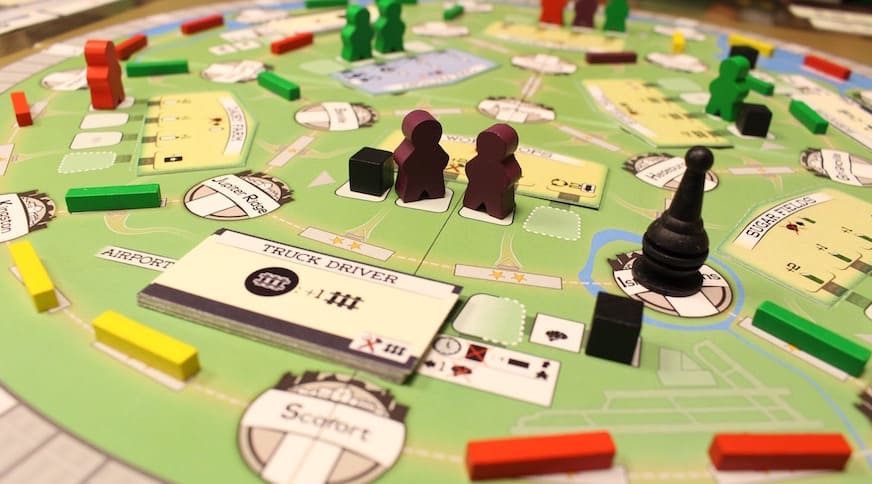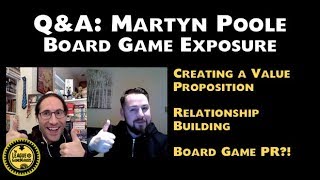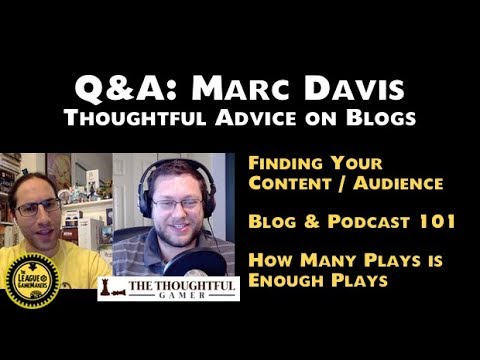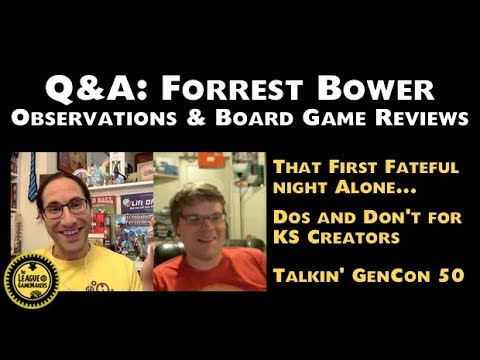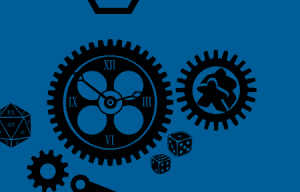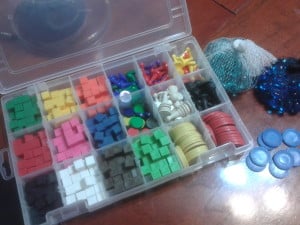
Testing your ideas quickly and easily is essential for good game design, and versatile components help with that. But trying to shuffle index cards or sticking and resticking labels to a posterboard leads to mangled, unattractive prototypes that can be hard to adjust and worse, to get an audience to test. Here’s an overview of what Whirling Derby keeps on hand for putting together beta test versions of our games:
1. DICE
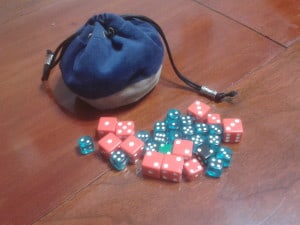
Serving double duty for Pathfinder nights, dice of different colors and shapes can be used as pawns, health counters, and, of course, random number generators. For our steampunk dice game Rig, our prototypes were Fate Dice with stickers on them.
2. CARDS AND CARD SLEEVES
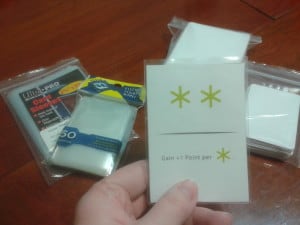
Investing in some blank cards (The Game Crafter occasionally has sales that make them extra cheap) and card sleeves means never having to cut through cardstock, and never worrying if your cards are the same size. Sleeving and backing your prototype cards with blank ones gives you a durable, opaque, shuffleable card that’s easy to adjust both front and back with normal printer paper.
3. PERSONAL PAPER CUTTER
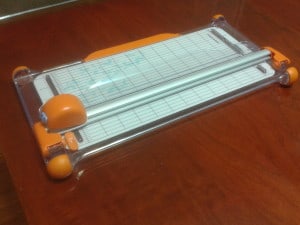
Look for these in the scrapbooking section of your local craft store. These things run about $20 and will save your hand from the pain of scissors-cramping when you’re cutting up hundreds of cards to send more beta versions out to your testers or trading print-and-play games with a fellow designer. Worth every penny.
4. BIT BOX

Craft stores like Michaels and Jo-Ann make segmented boxes for beading, and they’re perfect for holding extra cubes, pawns, chips, and tokens of all kinds.
5. GAME BOARDS
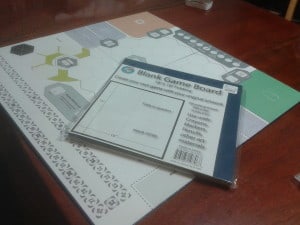
Though we usually go for a nice printing at the Game Crafter to lure in playtesters with shiny graphics, we also found our local education store sells blank game boards. Combine these with strategic use of low tack label paper and you have an instantly adjustable board!
6. JUST ABOUT ANYTHING FROM AN EDUCATIONAL STORE
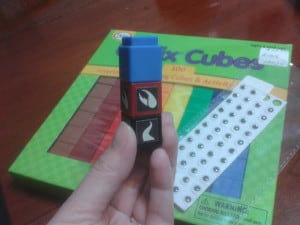
When we were trying to find game pieces that we could mix and match components on for our upcoming worker-builder-placement game? Unifix cubes. When we were trying to make them look like alien heads? Googly eyes. Counting cubes, dice, fake money, lamination services… education stores are gold mines for prototypers.
What’s in your prototyping collection? And what tricks have you learned for prototyping your games? Let us know in the comments!

